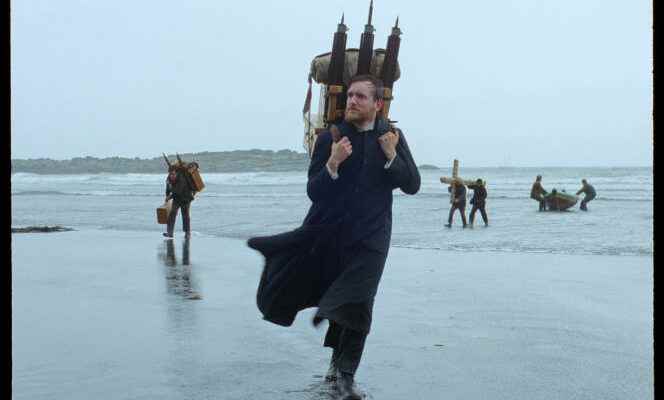THE OPINION OF THE “WORLD” – NOT TO BE MISSED
Winter Brothers (2018), A day so white (2020), Godland : we must now reckon with Hlynur Palmason, a 38-year-old Icelandic filmmaker, author of three magnificent films which form, without saying it, a coherent whole, which could be designated as a trilogy of obliteration. Because Palmason ruminates until the obsession the same reason: whiteness. These first three feature films try to represent a kind of moving color chart of all the possibilities of white and, for these heroes, the different ways of letting themselves be slowly swallowed up in it. White is both the imprint of a concrete and familiar landscape – Iceland – as much as an inner state, that of men defined by an obsession, an intimate quest, a desire for affirmation that drifts into its opposite – a way of disappearing from oneself and from the world.
Presented this year in the Cannes selection Un certain regard, Godland formulates this idea with a little more breadth and formal ambition than its predecessors. We are at the end of the XIXe century, an idealistic young Danish priest (Elliott Crosset Hove) is sent to a remote part of Iceland, then a wild land still under Danish domination, with the mission of building a church there and photographing its population. Armed with a few escorts and his heavy photographic equipment, Lucas embarks on this great crossing by boat and on horseback, resembling an Icelandic western, soon followed by Ragnar, a translator guide with whom relations will only worsen. The second part narrates his stay in the Icelandic village where, back from the dead after a hand-to-hand fight with a hostile nature, Lucas will have to go through a final ordeal no less harsh, that of human passions.
A card tells us at the beginning of the film: everything Godland “fiction” around a series of seven negatives on glass plate which are, in Iceland, the oldest photographs known to date. A material that formulates a kind of text with holes that the film tries, with all the poetry in the world, to complete and from which it borrows its square format (1.33) with rounded edges. A format that at regular intervals, auteur cinema likes to re-invoke, often out of coquetry vintage, too rarely out of necessity. This is precisely the great strength of Godland to weave gracefully between all the pitfalls that stand in its way, notably succeeding in avoiding being an arty film entirely in the hands of its production designer. We watch, waiting for Godland in turn succumbs to prettiness, but everything is profoundly organic, necessary, musical.
You have 52.75% of this article left to read. The following is for subscribers only.
